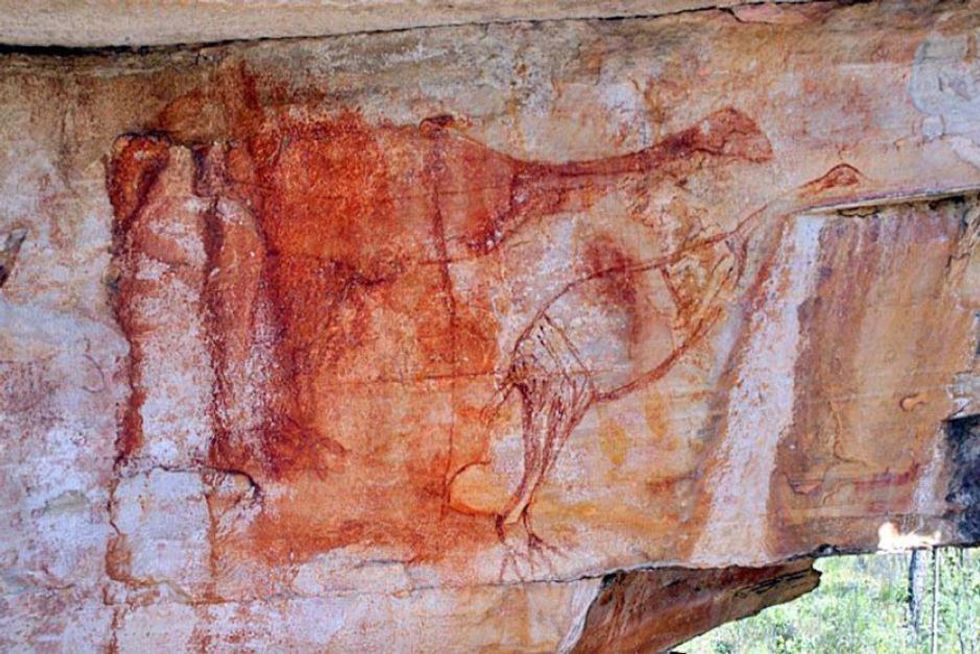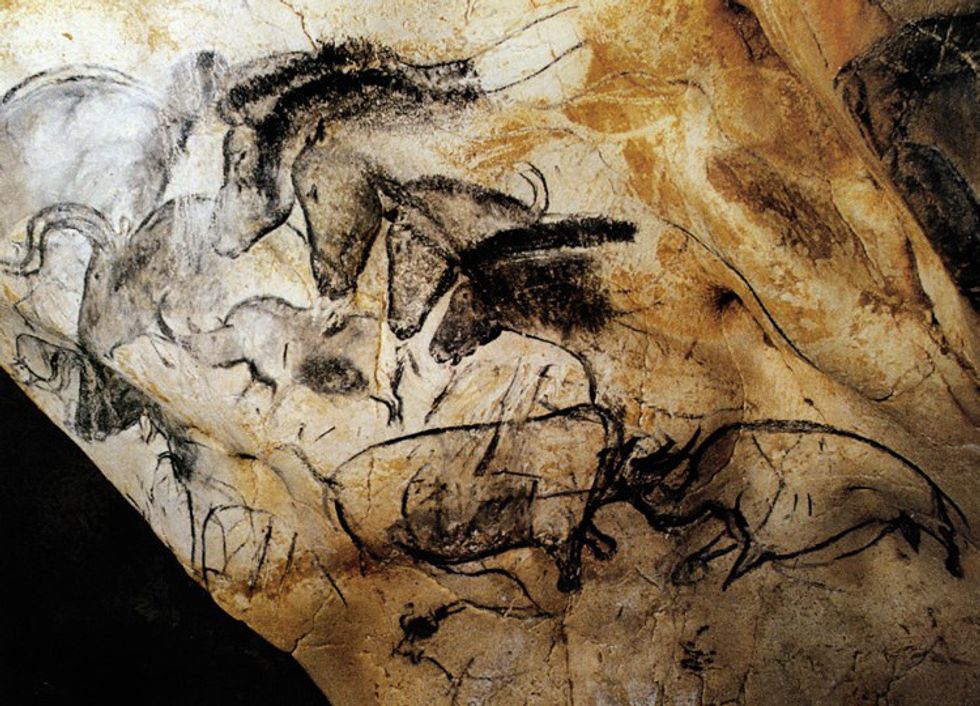Have you ever thought about how strange it is that now, art has many styles around the world, but in cave paintings everything looks much the same? Art constantly expresses not only an artist’s style, but also the style of the society in which it was created, and sometimes there are uncanny connections between societies, even when they have no contact with eachother what so ever.
This fascinating connection can be found in many places, such as a wall painting in the Chauvet Cave in Valllon-Pont-d’Arc, France, which was painted around 30,000-28,000 B.C.E. or 15,000-13,000 B.C.E., that depicts auroughs, horses and rhinoceroses in charcoal. This was discovered by a French team led by Jean-Marie Chauvet in 1994, making it the earliest known mural at the time (pictured below).
It's common to find cave paintings of animals, as hunting was so important to the people's survival, however the profile of these animals are uncharacteristic of the time. These creatures are drawn in a more naturalistic view, or profile view, with creatures overlapping, rhinoceroses fighting. Usually, in earlier cave paintings, the animals are drawn in composite view, which means a strange warping of what the animal would actually look like in order to give the most information about the animal as possible. The profile view shows a sophistication unknown in its time; it could also show the first elements of story-telling in art, as it shows a scene with the rhinos fighting, or one artist reacting to another, although their position could simply be a coincidence. It is hard to analyze such old artwork, and this uncertainty of origin and meaning is certainly not reserved for the paintings in this cave alone...

Despite the difference and controversy in age, and the gap in geographic location, the styles are much the same between the Arnhem painting and the Chauvet charcoal drawing. Both use outlines with a limited color palette, due to what was available and discovered at the time; both are drawn from the side view, and both were assumedly drawn by those who have seen the creatures, and therefore were most likely indigenous to that area. Even though there could not have been contact between the people of Australia, Europe, or even Africa, they all had very similar subjects and styles on the whole.
Influences and inspirations are a mysterious thing, and often can give pieces of art a distinct style, or a style similar to others. A way of life, such as hunting, can influence the same subject matter on cave paintings around the world. A simple painting can help to answer questions about the past, and create dozens more yet to be confirmed or answered. What do you think these tell us about our past?


















